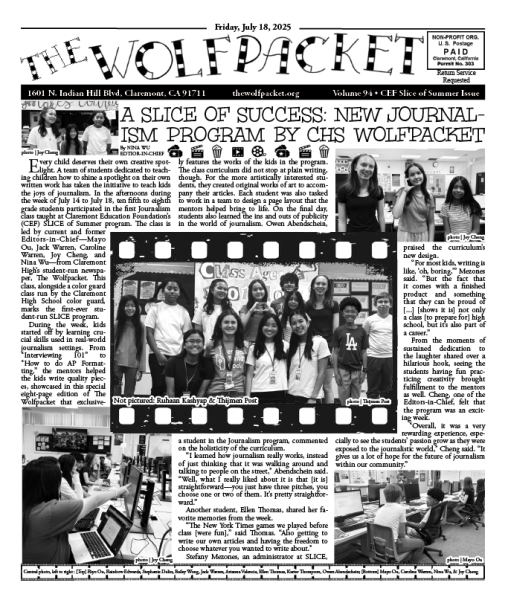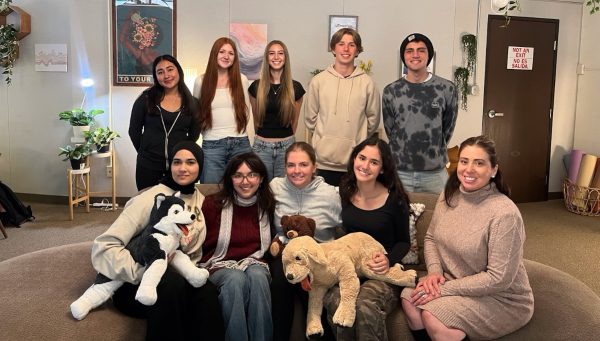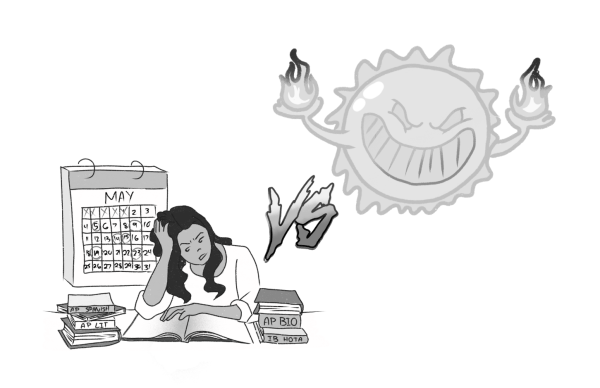Mock Election Held at CHS
Many think that individuals must be of legal age or older to have a say or a vote in what goes on in the community or country that surrounds them. While technically, this is true, both faculty and students of CHS have worked together in creating an event in which students will be able to have a little taste of democracy. While the Presidential election, taking place on November 8th of this year, still only allows those who are 18 or older to have a ballot, students were given a chance to participate in a mock election that took place in central quad that same day. Though in previous years the mock election was only open to juniors and seniors, this year students of all levels will be able to participate
Each social science teacher was asked to call for 5 volunteers to help with the mock election. Though AP government classes have the brunt of the operation, being apart of the planning process since the beginning and training underclassmen on how to work the poll, the event includeD student volunteers from every grade level. Each student involved in the mock election had a different job, working in teams to enhance the event, including students who are putting together pro and con arguments pertaining to one of the issues that will be voted on.
On election day there was a vote on the President and Vice President, and four propositions; Prop 56, which suggests a two dollar increase on the taxation of cigarettes, Prop 62, suggesting the repeal of the death penalty, Prop 63, which would increase background checks and would get rid of large magazine ammunition for guns, and lastly Prop 64, the legalization of recreational marijuana. The AP government chose these propositions out of the 17 that were voted on by the country to decrease the length of the voting time and hopefully entice students to vote on matters that pertain to their age group. Each proposition will be debated, but the position of President and V.P will be spared due to the negative tone already associated with this year’s election. The pros and cons of each proposition were stated in one minute segments that were aired on Wolfcast the week before the election, in hopes to educate students on the topics they would be voting on as well as to prompt thought and conversation amongst students
On November 8th, 16 voting booths with 2,300 real ballots and some voting machines stood in central quad waiting for the election to begin. These items were donated by a foundation called ARSYLYN that focuses on encouraging voting in young people. After the election, two AP stats classes did exit polling by taking a random sample of students who had voted and asking them who they voted for, if they were comfortable with admitting it. During sixth period on the eigthe, AP government students will count the ballots together and the results will be announced by the end of seventh period.
“Statistics show that if you participate in any voter education, get out the vote activity, or actually went out and voted that you are more likely to vote,” AP Government teacher Beth Bodnar said. “Our hope is that this will increase voter participation since the lowest voter turnout is in people 18-26 years old.”
Another goal of the mock election is to get students away from all of the negative connotation surrounding the presidential election, by educating them on topics that are important and affect not only their parent’s lives, but also their own.
Although the results of the mock election did not affect the results of the actual election the students of AP Government and AP Statistics certainly learned a great deal about the voting process and the importance of the individual vote. Now, CHS waits until 2020 before future students can repeat this process all over again.
Hello there! Our goal is to provide relavent, engaging journalism for readers of all ages. Your donation will support the student journalists of the Wolfpacket at Claremont High School, and will allow us to purchase equipment, print our monthly issues, and enter in journalism competitions. We appreciate your consideration!







